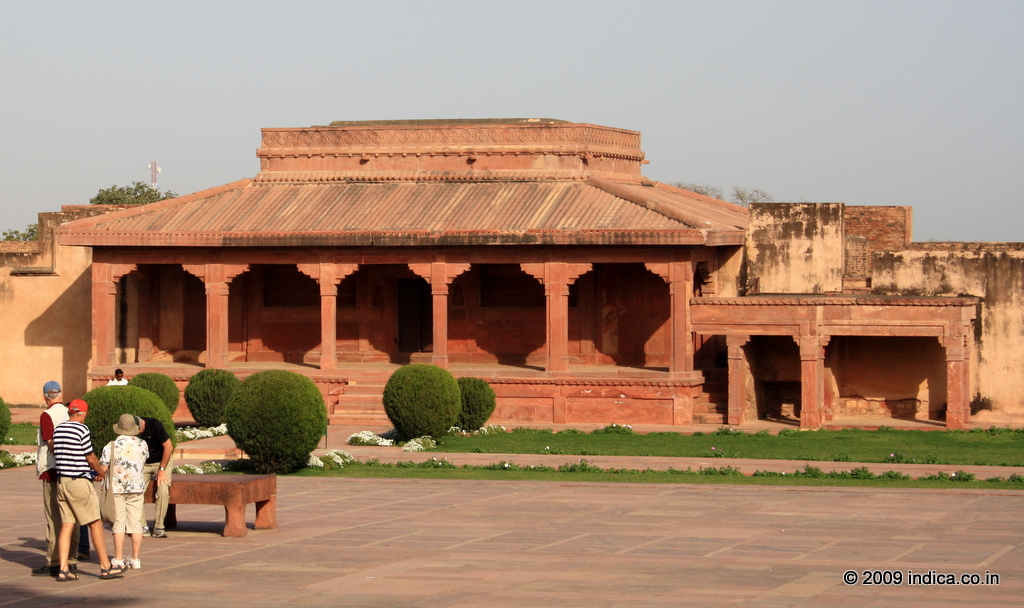Diwan-i-Am
T
he Royal CourtThroughout the Mughal era, there were two courts that the emperor attended during his daily routine. One was the Diwan-i-Khas and the other was the Diwan e Khas. In Fatehpur Sikri – Diwan-e-aam and Diwan-e-Khas were both present. The Diwan E Khas was for noblemen and courtiers.
Here the emperor consulted with his advisors and took important decisions pertaining to the management of his empire. The building housing the Diwan-i-Khas also served as a treasury to keep the royal khazana or treasure safe. The revenues collected from different parts of the empire were kept here and the decisions were taken by the emperor to dispense this treasury for the welfare of the empire with the help of advice from the advisers.
The other court was the Diwan E aam where the Mughal emperors allowed the common citizens to visit him and discuss their problems. The emperor then tried to find a solution to these problems.
The Diwan E aam was also a court of justice where the emperor pronounced punishment for the people guilty of any offence according to the laws of the empire and provided justice to people who were wronged. The Fatehpur Sikri – Diwan-i-am was also one such court and the emperor Akbar appeared here before his citizen for three hours after sunrise.
An executioner was always present only to maintain discipline but was never used. Akbar again visited the Diwan-e-aam after inspecting the stables to reward or punish the grooms and to take care of the management of the Karkhanas or workshops.

Diwani I Am, the king's public audience hall
Diwani I Am, the king's public audience hall
